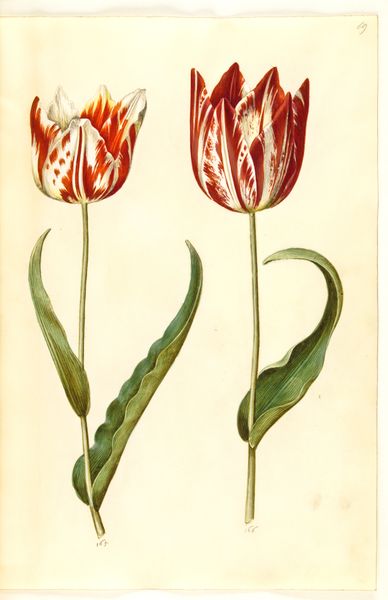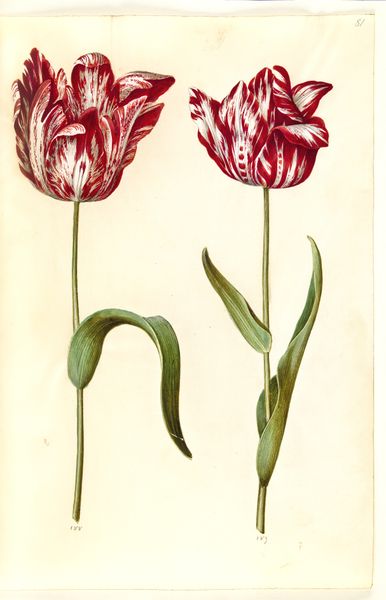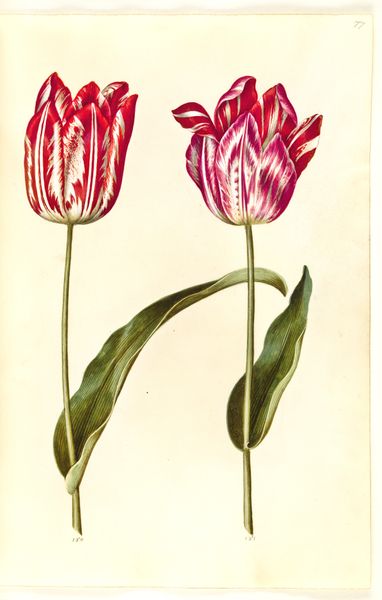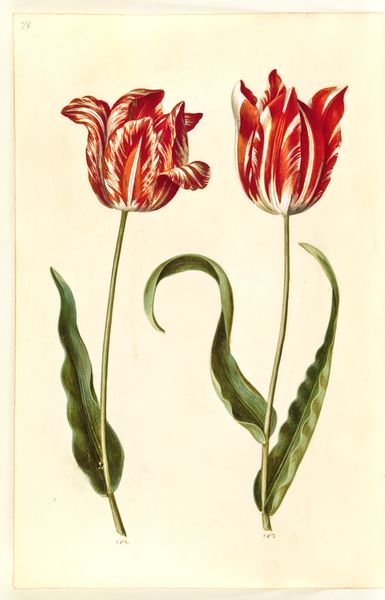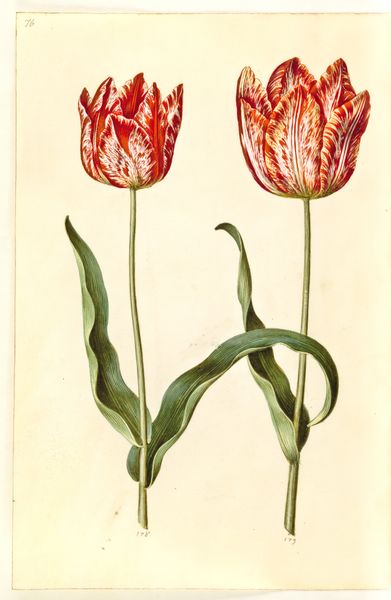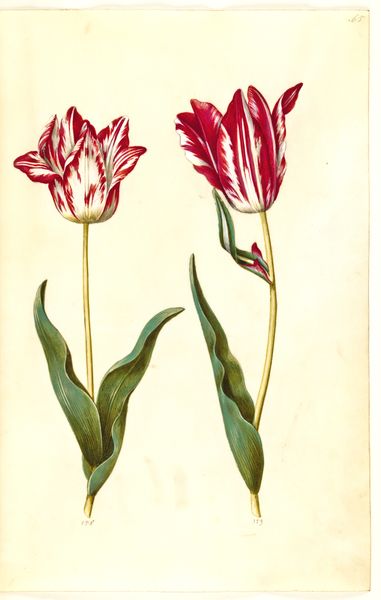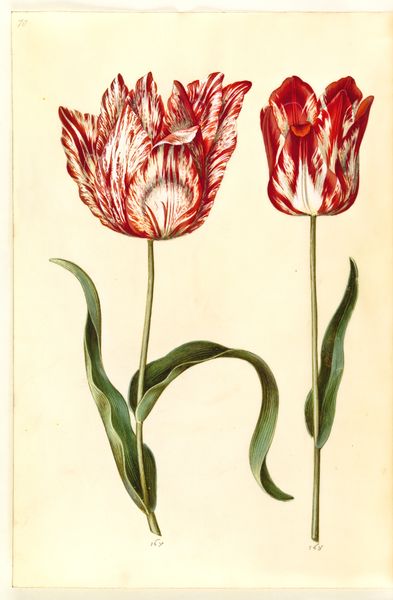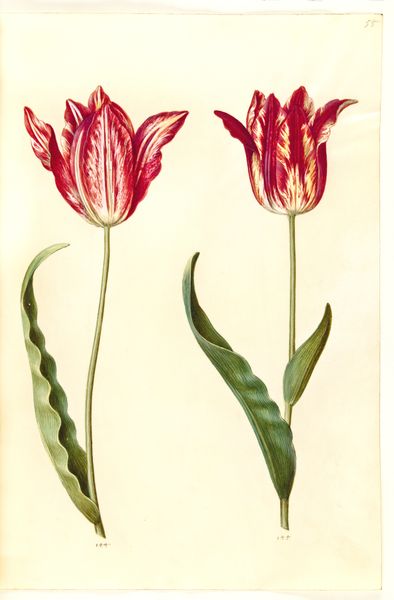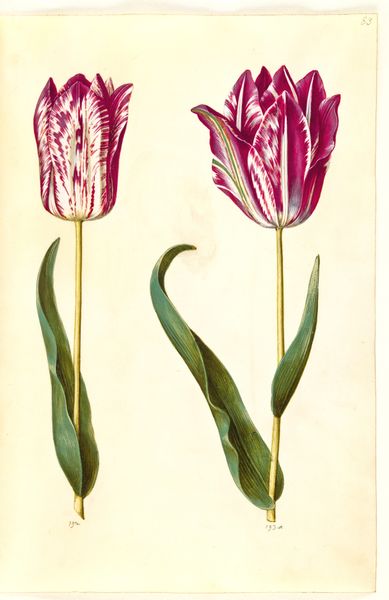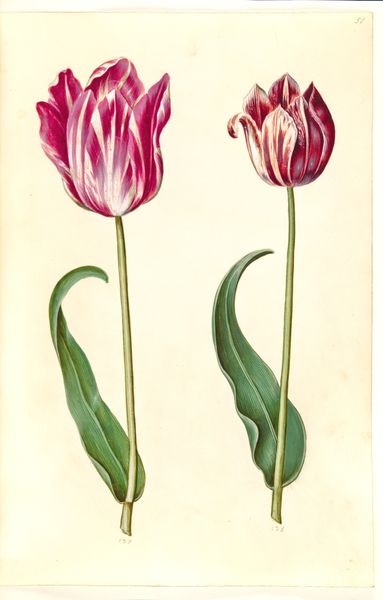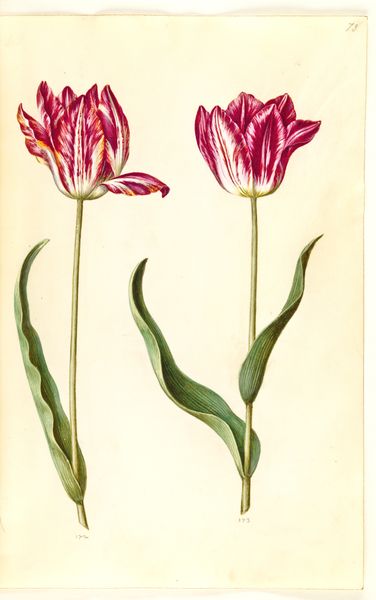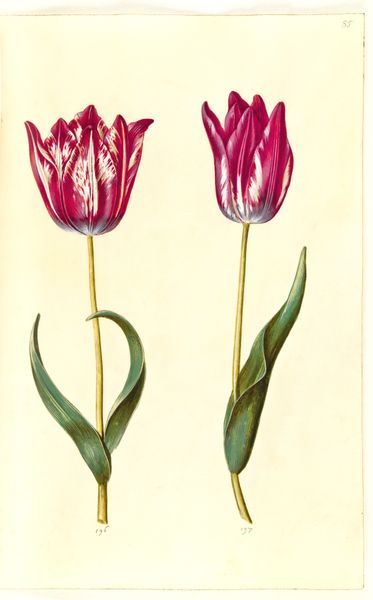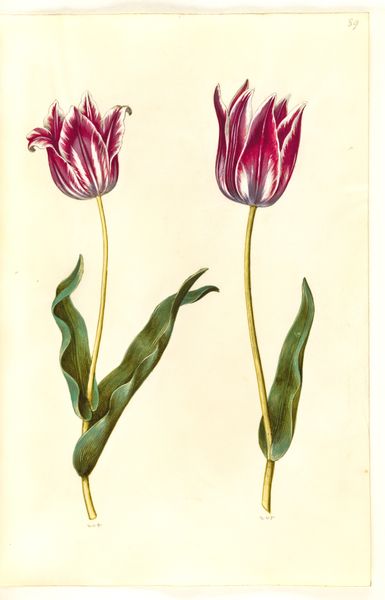
drawing, gouache
#
drawing
#
dutch-golden-age
#
gouache
#
botanical art
Dimensions: 375 mm (height) x 265 mm (width) x 85 mm (depth) (monteringsmaal), 358 mm (height) x 250 mm (width) (bladmaal)
Editor: Here we have "Tulipa gesneriana (have-tulipan)", created between 1635 and 1664 by Hans Simon Holtzbecker. It’s a drawing done in gouache, and the detail is incredible! What really grabs me is the interplay of red and white in the petals. How would you approach interpreting this piece? Curator: The strength of this work lies in its formal arrangement. Note the careful consideration of positive and negative space. The tulips are not simply placed on the page; their positioning, relative to each other and the edge, dictates the composition's visual rhythm. Observe, too, how Holtzbecker uses line to delineate form and texture, a structural method that serves to intensify our apprehension of the botanical forms themselves. Editor: So, you're focused on the artistic elements, rather than what the tulips might *represent* historically? Curator: Precisely. Though contextual information is, of course, relevant, this method allows us to attend to the immediate visual impact of the work, to consider how color, line, and form generate meaning independently of external referents. Are you seeing how the lines converge and diverge to guide the eye around the image? Editor: I do see how the curving leaves sort of echo the shapes in the petals, creating a kind of visual harmony. It’s a very thoughtful arrangement! I appreciate how the attention to form enhances the organic qualities of the flower. Curator: Exactly. This kind of analysis illuminates how Holtzbecker’s piece successfully bridges representation and abstraction. It compels us to contemplate its compositional structure first and foremost, which transcends the merely representational. Editor: I learned to see the intentional organization, that it is about the artwork, not only about the real-world object depicted. Curator: Indeed. By analyzing form and structure, we uncover a richer and more complex understanding of the work itself.
Comments
No comments
Be the first to comment and join the conversation on the ultimate creative platform.
